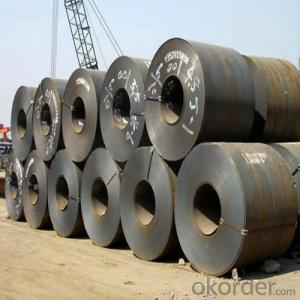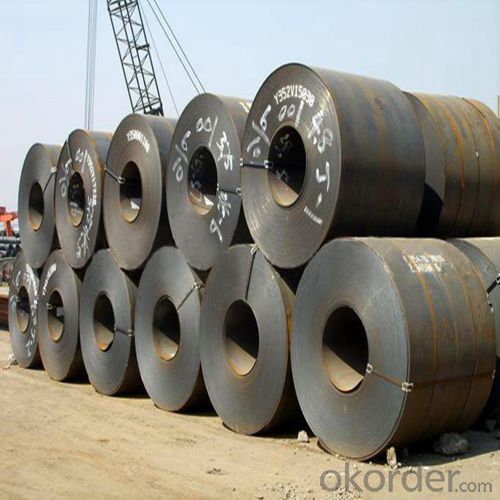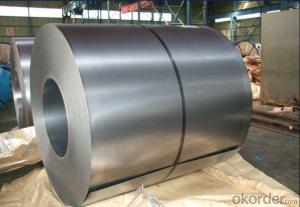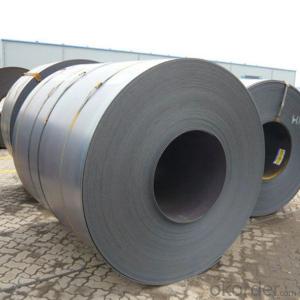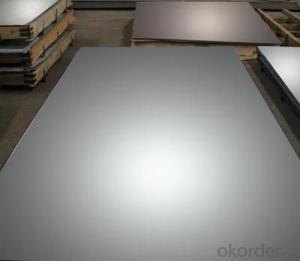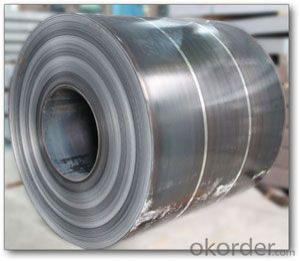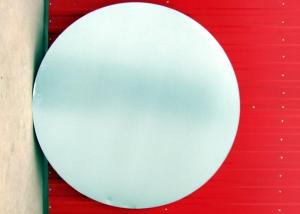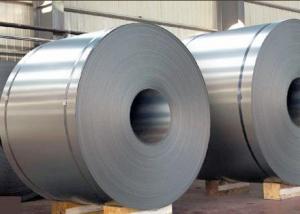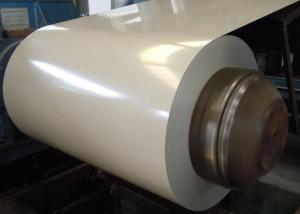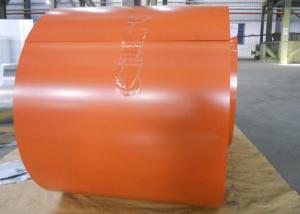High Quality Hot Rolled Steel Coil Good Price
- Loading Port:
- Shanghai
- Payment Terms:
- TT or LC
- Min Order Qty:
- 1000 m.t.
- Supply Capability:
- 50000 m.t./month
OKorder Service Pledge
OKorder Financial Service
You Might Also Like
Product Description:
OKorder is offering High Quality Hot Rolled Steel Coil Good Price at great prices with worldwide shipping. Our supplier is a world-class manufacturer of steel, with our products utilized the world over. OKorder annually supplies products to European, North American and Asian markets. We provide quotations within 24 hours of receiving an inquiry and guarantee competitive prices.
Product Applications:
High Quality Hot Rolled Steel Coil Good Price are ideal for structural applications and are widely used in the construction of buildings and bridges, and the manufacturing, petrochemical, and transportation industries.
Product Advantages:
OKorder's High Quality Hot Rolled Steel Coil Good Price are durable, strong, and resist corrosion.
Main Product Features:
· Premium quality
· Prompt delivery & seaworthy packing (30 days after receiving deposit)
· Corrosion resistance
· Can be recycled and reused
· Mill test certification
· Professional Service
· Competitive pricing
Product Specifications:
Hot rolled coil is used for continuous casting slab or slab as raw material, after reheating furnace heating, scales entered the roughing mill in the high pressure water, roughing cut is expected by the head, tail, and then enter the finishing mill, the implementation of the computer controlled rolling, finally after rolling through the laminar cooling (computer controlled cooling rate) and coiling machine coiling, become straight hair volume. Hair straightener roll head, tail often forms a tongue shape and fishtail, thickness, width of poor accuracy, edge has wavy, folding, tower and other defects. The volume weight heavier, steel coil diameter is 760mm. (general pipe industry like use. )
2 two, characteristics
Because there is no after annealing treatment, the hardness is very high (HRB greater than 90), mechanical processing performance is poor, only a simplebending process has less than 90 degree directional (direction perpendicular to the rolled).
Three, use 3
Hot rolled products with high strength and good toughness, easy processing and good forming can be excellent performance of welding, which is widely used in ships, cars, bridges, buildings, machinery, boiler, pressure vesselmanufacturing industry.
The scope of application:
(1) after annealing processing into the common cold;
(2) processing galvanized galvanized unit before the annealing treatment;
(3) the basic do not need to process the panel.
4 four, classification
Carbon steel plate, carbon plate, low alloy plate, ship plate, bridge plate, boiler plate, container plate etc.. Rolling hard volumes: under normal temperature,the hot pickling volumes of continuous rolling.
Hot rolled steel strip products include steel (roll) and the shear of steel plate.And steel (coils) can be divided into straight and finishes volume (the volume,smooth rolling and slitting roll).
FAQ:
Q1: Why buy Materials & Equipment from OKorder.com?
A1: All products offered byOKorder.com are carefully selected from China's most reliable manufacturing enterprises. Through its ISO certifications, OKorder.com adheres to the highest standards and a commitment to supply chain safety and customer satisfaction.
Q2: How do we guarantee the quality of our products?
A2: We have established an advanced quality management system which conducts strict quality tests at every step, from raw materials to the final product. At the same time, we provide extensive follow-up service assurances as required.
Q3: How soon can we receive the product after purchase?
A3: Within three days of placing an order, we will begin production. The specific shipping date is dependent upon international and government factors, but is typically 7 to 10 workdays.
Q4: What makes stainless steel stainless?
A4: Stainless steel must contain at least 10.5 % chromium. It is this element that reacts with the oxygen in the air to form a complex chrome-oxide surface layer that is invisible but strong enough to prevent further oxygen from "staining" (rusting) the surface. Higher levels of chromium and the addition of other alloying elements such as nickel and molybdenum enhance this surface layer and improve the corrosion resistance of the stainless material.
Q5: Can stainless steel rust?
A5: Stainless does not "rust" as you think of regular steel rusting with a red oxide on the surface that flakes off. If you see red rust it is probably due to some iron particles that have contaminated the surface of the stainless steel and it is these iron particles that are rusting. Look at the source of the rusting and see if you can remove it from the surface.
Images:
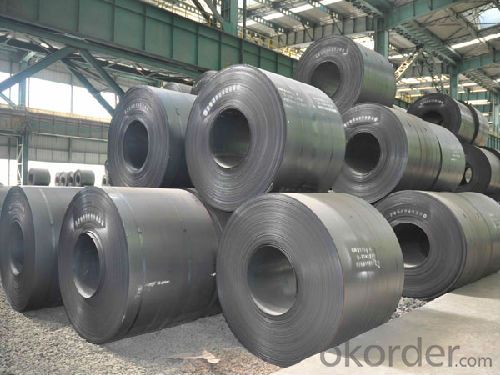

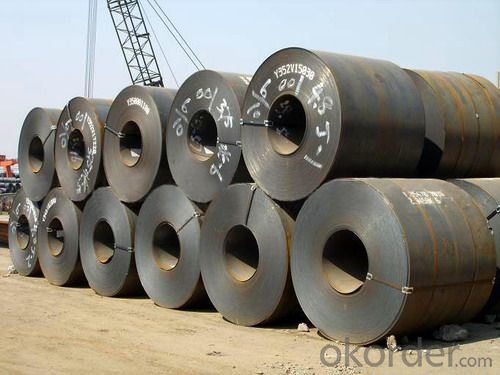
- Q: What is the AISI grade of mild steel that is the most magnetic? What magnetic steels are the cheapest and easiest to buy?
- From what I understand, the best material for cores is not the most magnetic but the rather the one having less loss due to hysteresis,
- Q: What are the different types of steel coil surface appearances?
- The different types of steel coil surface appearances include mill finish, pickled and oiled, galvanized, painted, and textured.
- Q: What is the role of steel coils in the production of storage tanks?
- Steel coils play a crucial role in the production of storage tanks as they are used to construct the cylindrical body of the tank. These coils are cut and shaped into the desired dimensions and then welded together to create a strong and durable structure. The high strength and corrosion resistance properties of steel make it an ideal material for storage tanks, ensuring the safety and longevity of the tanks in various industries such as oil and gas, chemical, and water storage.
- Q: When I took guitar lessons, I found that the Nylon strings are easier for me, but I love the sound of steel strings. Now, I have my own acoustic guitar, and 2 strings broke off, so I'm getting strings today. I'm not sure if Nylon strings would 'fit' on my guitar, and it's to soft of a noise. But the steel are much better sounding, but it's a little bit harder to push the string down on the fret. Which do you prefer, why?(:
- If your acoustic guitar is a steel-string (acoustic only means it's not electric) you can only put steel strings on it. Nylon strings would probably require modification of the nut and would sound terrible even then. A steel-string guitar is built and braced to work with steel strings and will not respond properly to the lighter tension of nylon strings. On the other hand, steel strings will destroy a guitar that is built for nylon in very short order. There are two things you can do here. If you have a steel-string guitar and are still using the strings that came on it, they are probably light gauge. You could try an extra-light set or even silk steel. Alternatively, you could have your guitar looked at by a guitar tech or other knowledgeable person and see if it needs a setup. The action (string height off the fretboard) on a properly adjusted steel-string guitar should actually be lower than on a classical guitar. Cheap guitars off the internet or from non-music stores are especially notorious for being poorly adjusted.
- Q: I have a white gold engagement ring, and to be special I thought I'd get a plain band from Tiffany's--in stainless steel. Can stainless steel be worn with white gold or will there be a difference in the color or texture? I'm not planning on getting them soldered together, but I don't want it to be noticeable that they are different metals. Does anyone have experience in this subject?
- I didn't know Tiffany's sold stainless steel rings. I think the colour might match, but the texture wouldn't really (from looking at all the stainless steel around my kitchen. The only way to know for sure is to go to Tiffany's and try it on with your ring. Why not consider a white gold band from Tiffany's? I don't know what the price difference would be on that. But you can get a white gold for around $250 from TCo.
- Q: I'm assuming that brass is flexible, expands and then bounces back to it's original shape. But if aluminum and steel expand and don't contract wouldn't they cause guns to jam more often for example?
- This Site Might Help You. RE: Why can aluminum and steel casings not be used for reloading? I'm assuming that brass is flexible, expands and then bounces back to it's original shape. But if aluminum and steel expand and don't contract wouldn't they cause guns to jam more often for example?
- Q: What are the common methods of inspecting steel coils for quality control?
- There are several common methods of inspecting steel coils for quality control purposes. These methods typically involve visual inspection, dimensional measurement, and non-destructive testing. Visual inspection is one of the simplest and most common methods used to inspect steel coils. It involves visually examining the surface of the coils for any visible defects, such as scratches, dents, or discoloration. Visual inspection can also include checking for proper labeling, packaging, and any signs of corrosion or damage. Dimensional measurement is another important method used to ensure the quality of steel coils. This involves measuring various dimensions of the coils, such as thickness, width, and length, to ensure they meet the required specifications. Dimensional measurement can be performed using various tools such as calipers, micrometers, or laser measurement devices. Non-destructive testing (NDT) techniques are also commonly employed to inspect steel coils. NDT methods allow for the detection of internal and surface defects without damaging the material. One common NDT technique used for steel coil inspection is ultrasonic testing, which involves sending high-frequency sound waves through the coil and analyzing the reflected waves to identify any defects. Magnetic particle testing and dye penetrant testing are also used to detect surface cracks or defects in the coils. In addition to these methods, other quality control practices may include chemical analysis to ensure the composition of the steel meets the required standards, mechanical testing to evaluate the strength and hardness of the material, and corrosion testing to assess the resistance of the coils to corrosion. Overall, a combination of visual inspection, dimensional measurement, and non-destructive testing techniques is typically employed to ensure the quality and integrity of steel coils during the quality control process.
- Q: How are steel coils cut to size?
- Steel coils are cut to size using a variety of methods such as shearing, slitting, or laser cutting. These processes involve using specialized machinery to ensure precise and accurate cuts according to the required dimensions.
- Q: How are steel coils inspected for yield strength?
- Steel coils are inspected for yield strength through a process called tensile testing. In this method, a small sample is cut from the steel coil and subjected to a controlled tension until it reaches its yield point. The amount of force required to deform the sample is measured, allowing for the determination of its yield strength.
- Q: i heard steel type is good and i don't have any i have defeated all the trainers up to the icicle badge (i have got the icicle badge but not the one after) where can i get one?
- lucario is both fighting and steel if you got piplup, empoleon is water and steel, if you happen to have a shieldon (only in pearl) he is ground and steel. Bronzor and bronzong are both psychic and steel you can find them in wayward cave is the easiest place that is under cycling road Steelix is in victory road but i guess you aren't there yet hehehe.... aside from dialga, who is dragon and steel i think those are it, unless you have any others like heatran or magenezone sorry i can't help much Oh but I can trade a steeliz if you want? my name is JAY my fc is 1375.4387.9544 =D
Send your message to us
High Quality Hot Rolled Steel Coil Good Price
- Loading Port:
- Shanghai
- Payment Terms:
- TT or LC
- Min Order Qty:
- 1000 m.t.
- Supply Capability:
- 50000 m.t./month
OKorder Service Pledge
OKorder Financial Service
Similar products
Hot products
Hot Searches
Related keywords
